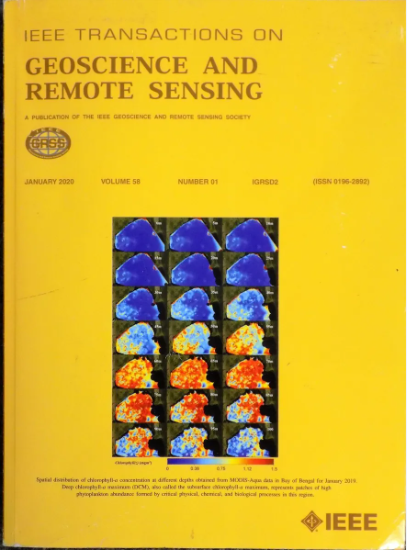Investigation of Hierarchical Spectral Vision Transformer Architecture for Classification of Hyperspectral Imagery
IF 7.5
1区 地球科学
Q1 ENGINEERING, ELECTRICAL & ELECTRONIC
IEEE Transactions on Geoscience and Remote Sensing
Pub Date : 2024-09-17
DOI:10.1109/TGRS.2024.3462374
引用次数: 0
Abstract
In the past three years, there has been significant interest in hyperspectral imagery (HSI) classification using vision Transformers for the analysis of remotely sensed data. Previous research predominantly focused on the empirical integration of convolutional neural networks (CNNs) to augment the network’s capability to extract local feature information. Yet, the theoretical justification for vision Transformers out-performing CNN architectures in HSI classification remains a question. To address this issue, a unified hierarchical spectral vision Transformer architecture, specifically tailored for HSI classification, is investigated. In this streamlined yet effective vision Transformer architecture, multiple mixer modules are strategically integrated separately. These include the CNN mixer, which executes convolutional operations; the spatial self-attention (SSA) mixer and channel self-attention (CSA) mixer, both of which are adaptations of classical self-attention blocks; and hybrid models, such as the SSA + CNN mixer and CSA + CNN mixer, which merge convolution with self-attention operations. This integration facilitates the development of a broad spectrum of vision Transformer-based models tailored for HSI classification. In terms of the training process, a comprehensive analysis is performed, contrasting classical CNN models and vision Transformer-based counterparts, with particular attention to disturbance robustness and the distribution of the largest eigenvalue of the Hessian. From the evaluations conducted on various mixer models rooted in the unified architecture, it is concluded that the unique strength of vision Transformers can be attributed to their overarching architecture, rather than being exclusively reliant on individual multihead self-attention (MSA) components. Extensive experiments demonstrate that the derived vision Transformer models, based on the unified architecture, surpass the classical methods when applied to multiple hyperspectral benchmark datasets.用于高光谱图像分类的分层光谱视觉变换器架构研究
在过去的三年里,人们对利用视觉变换器分析遥感数据的高光谱图像(HSI)分类产生了浓厚的兴趣。以前的研究主要集中在卷积神经网络(CNN)的经验整合,以增强网络提取局部特征信息的能力。然而,视觉变换器在 HSI 分类中优于 CNN 架构的理论依据仍然是个问题。为了解决这个问题,我们研究了一种专为 HSI 分类定制的统一分层光谱视觉变换器架构。在这个精简而有效的视觉转换器架构中,多个混合器模块被战略性地分别集成在一起。其中包括执行卷积操作的 CNN 混合器;空间自注意(SSA)混合器和通道自注意(CSA)混合器,这两种混合器都是对经典自注意模块的改编;以及混合模型,如 SSA + CNN 混合器和 CSA + CNN 混合器,它们将卷积与自注意操作合并在一起。这种整合有助于为人机交互分类量身定制各种基于视觉转换器的模型。在训练过程方面,进行了全面的分析,对比了经典的 CNN 模型和基于视觉变换器的对应模型,尤其关注干扰的鲁棒性和赫塞斯最大特征值的分布。通过对植根于统一架构的各种混合器模型进行评估,得出的结论是,视觉转换器的独特优势可归因于其总体架构,而不是完全依赖于单个多头自我关注(MSA)组件。广泛的实验证明,基于统一架构的视觉转换器模型在应用于多个高光谱基准数据集时超越了传统方法。
本文章由计算机程序翻译,如有差异,请以英文原文为准。
求助全文
约1分钟内获得全文
求助全文
来源期刊

IEEE Transactions on Geoscience and Remote Sensing
工程技术-地球化学与地球物理
CiteScore
11.50
自引率
28.00%
发文量
1912
审稿时长
4.0 months
期刊介绍:
IEEE Transactions on Geoscience and Remote Sensing (TGRS) is a monthly publication that focuses on the theory, concepts, and techniques of science and engineering as applied to sensing the land, oceans, atmosphere, and space; and the processing, interpretation, and dissemination of this information.
 求助内容:
求助内容: 应助结果提醒方式:
应助结果提醒方式:


